Ilias Lalaounis’ jewellery is widely sought-after at auction. Fellows Auctioneers' Business Development Manager, Nicola Whittaker, has researched the beauty behind the pieces. Examples are illustrated below from Fellows' 12th November 2020 Fine Jewellery sale and from previous sales.
One of the most prominent modern European goldsmiths, Ilias Lalaounis’ style is immediately recognisable by his preference for high carat gold and striking designs inspired by Greek and Byzantine art and architecture. Lalaounis described the role of the goldsmith as a story teller, linking the wearer to “age-old memories of humankind” by the jewellery they wear.
Lalaounis is widely acknowledged as a pioneer of modern Greek jewellery. He was the fourth generation of his family to work in the jewellery business and turned to designing jewellery instead of simply selling other people’s designs. He first exhibited in 1957 with a collection inspired by ancient Hellenic art and started his own company in the late sixties. By the time the seventies came he was leading light in goldsmithing and jewellery design with shops in most European counties and on Fifth Avenue in New York. By the eighties the company had expanded to Japan and Hong Kong.
In 1984 Lalaounis published an award-winning book on his art called Metamorphoses which remains one of the most trusted sources on his work to that date. The museumhe opened in the early nineties has a permanent display of his collections, both jewellery and objet d’art, from the forties to the early nineties.
In the book, Metamorphoses, Lalaouins describes his jewellery and objet d’art as more than “mere decoration but carries a message, has a story to tell”. By reviving designs from antiquity and blending them with the modern styles, Lalaounis connects the wearing with history. Having grown up in a house facing the Acropolis in Athens and basing his workshop nearby, it’s clear why Hellenic and Classical architecture, art and jewellery had such an impact on his work.
Neo-Geometric
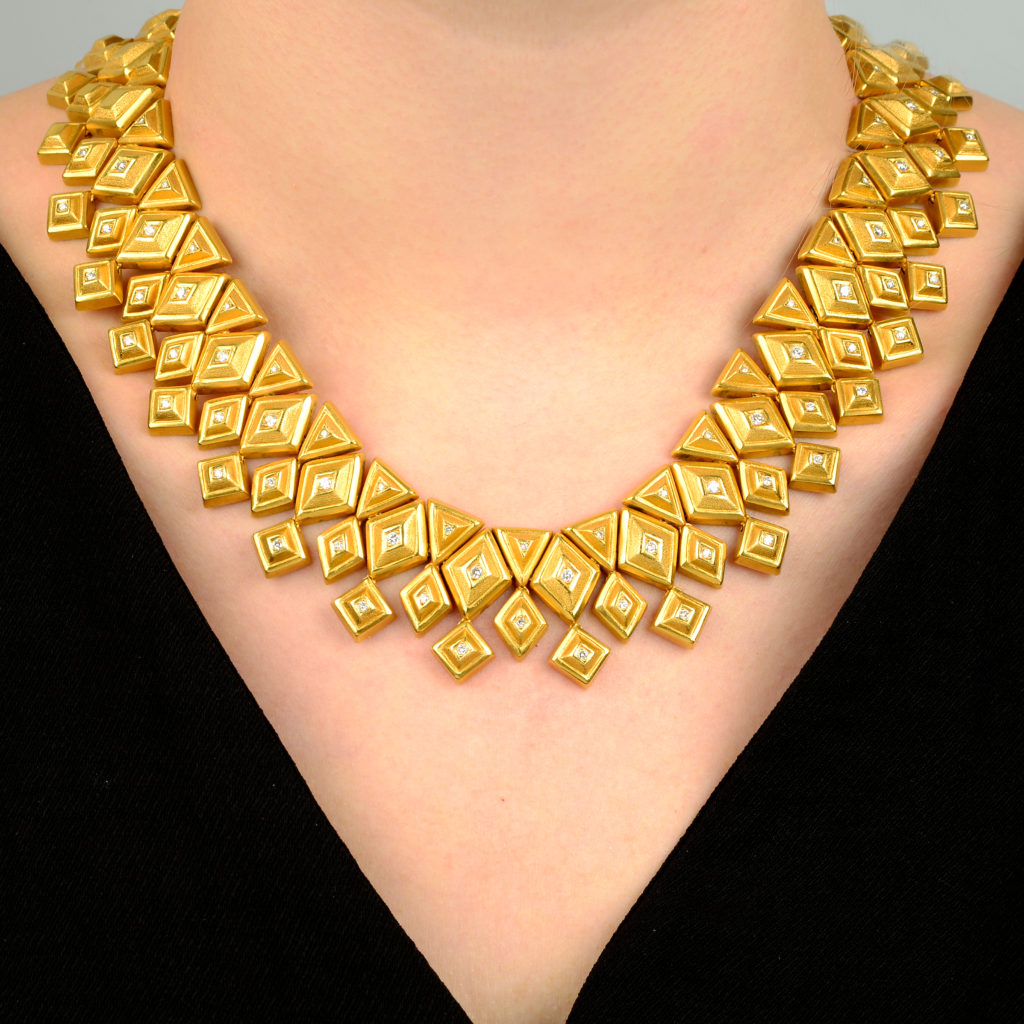
A diamond geometric necklace, by Ilias Lalaounis.
Estimate: £6,000 - £8,000
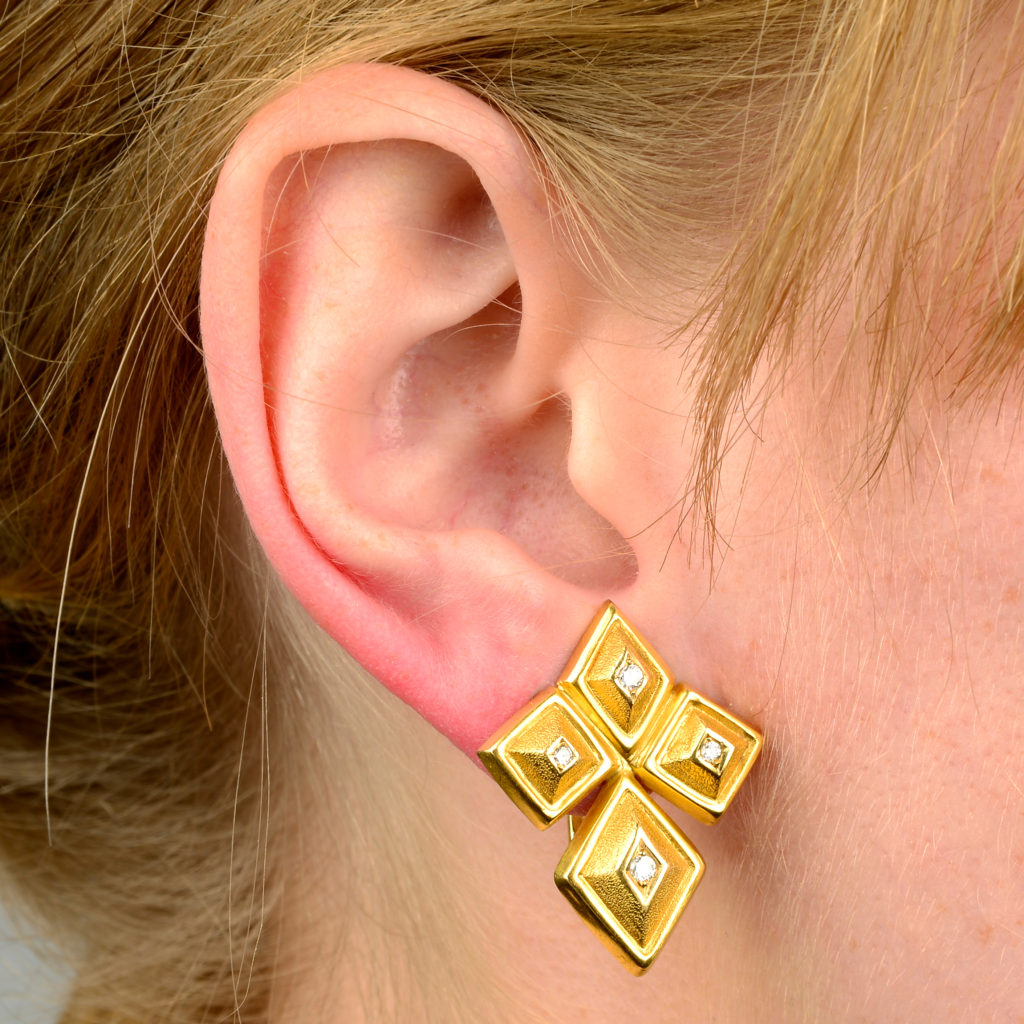
A pair of textured earrings, with diamond highlights, by Ilias Lalaounis.
Estimate: £900 - £1,400
Lalaounis took inspiration from architecture as well as ancient jewellery and art in these geometric collections such as in the necklace and earrings above. The pattern shown in this necklace (in November Fine Jewellery) is a nod to the Greek geometric period (eleventh to eighth century B.C) but also the design influences and technological of mid twentieth century. Lalaounis called these collections “Neo-Geometric” and described these lines as bridging “the gap between the very early and very modern concepts of beauty”.
Hellenistic Jewellery
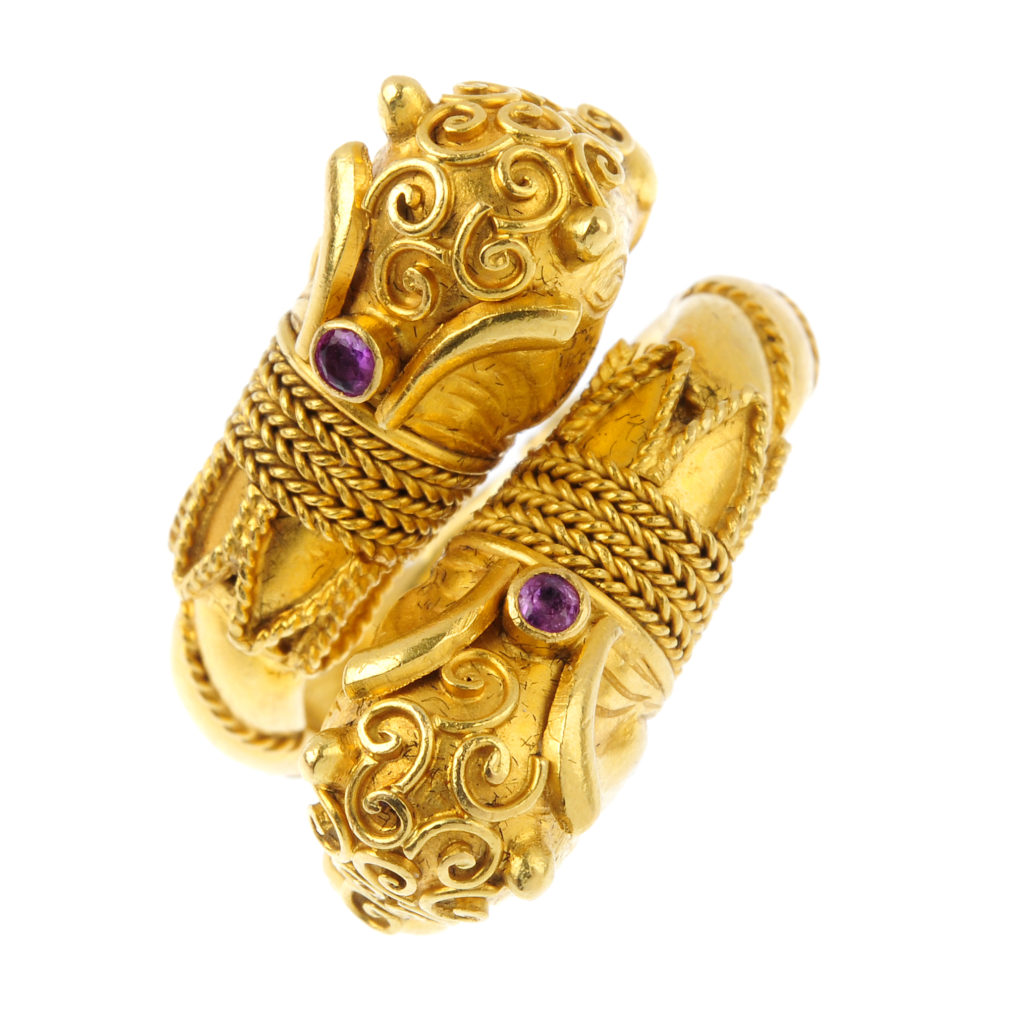
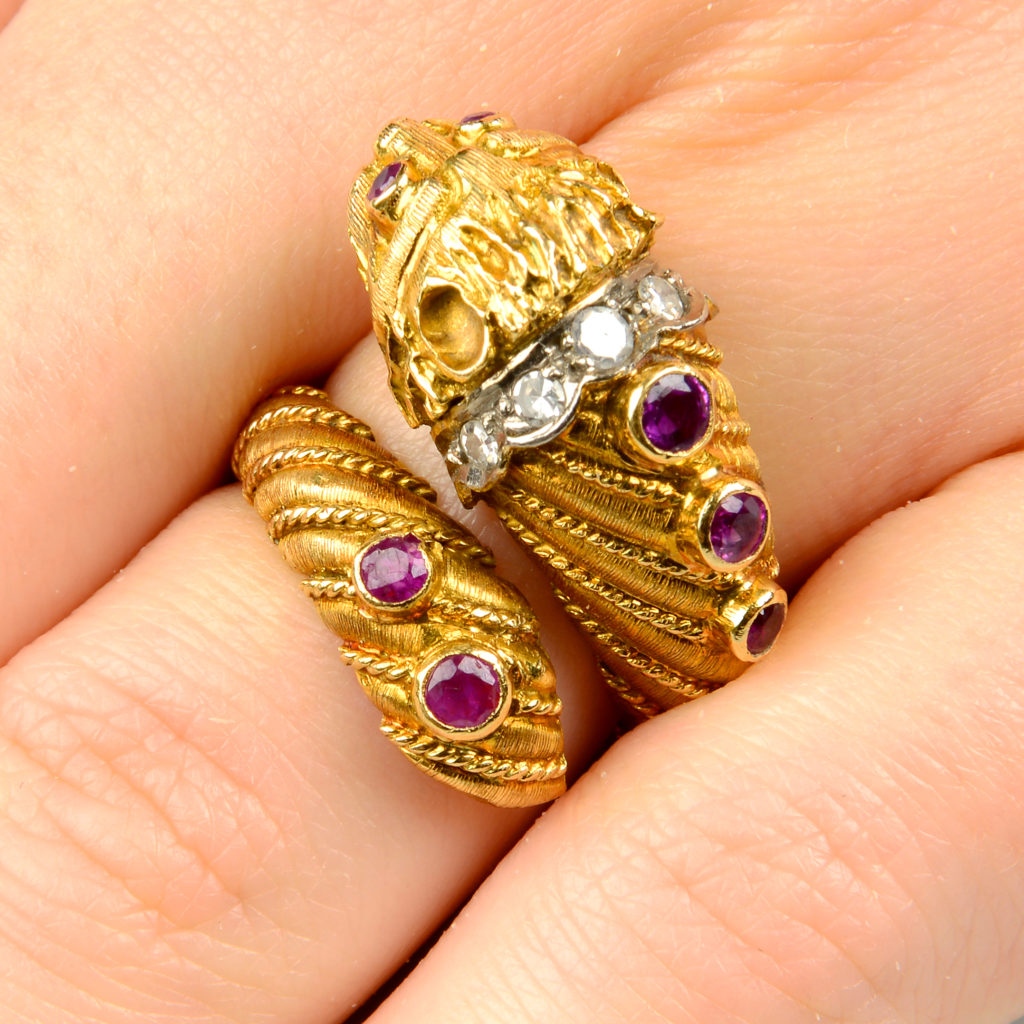
A ruby and diamond lion head dress ring, by Ilias Lalaounis.
Estimate: £1,000 - £1,500
Perhaps one of Lalaounis most immediately recognisable motifs is heavily influenced by ancient Hellenistic jewellery. Early on in Lalaounis’ goldsmithing career he was asked to reproduce ancient items from museums which led to his first exhibition which was predominantly excellent reproductions of classical pieces. At the time this wasn’t being done at this level, high quality reproductions weren’t seen as wearable jewellery. Lalaounis changed this in the fifties and they are some of his most sought-after pieces.
A key element that sets Lalaounis pieces apart from other simple reproductions is the research and skill that went into these pieces. As a goldsmith honing his craft, Lalaounis studied the work of the ancient goldsmiths in museums and tried to imagine the ideas behind the pieces. Using age-old techniques such as hammered gold, granulation work, repoussé and beading along with high carat gold, Lalaounis revived Greek jewellery as a style of its own.
The lion’s head, immediately recognisable as Hellenistic, has been used time and time again in Lalaounis collections over the years. In ancient jewellery the symbolic lion’s head is meant to give lion’s strength and power to the wearer. In Hellenistic jewellery, symbols were seen to be as important as the intrinsic value of the piece. The value of the gold and the symbolism of the lion shows power in two ways.
Persian and Byzantine Jewellery
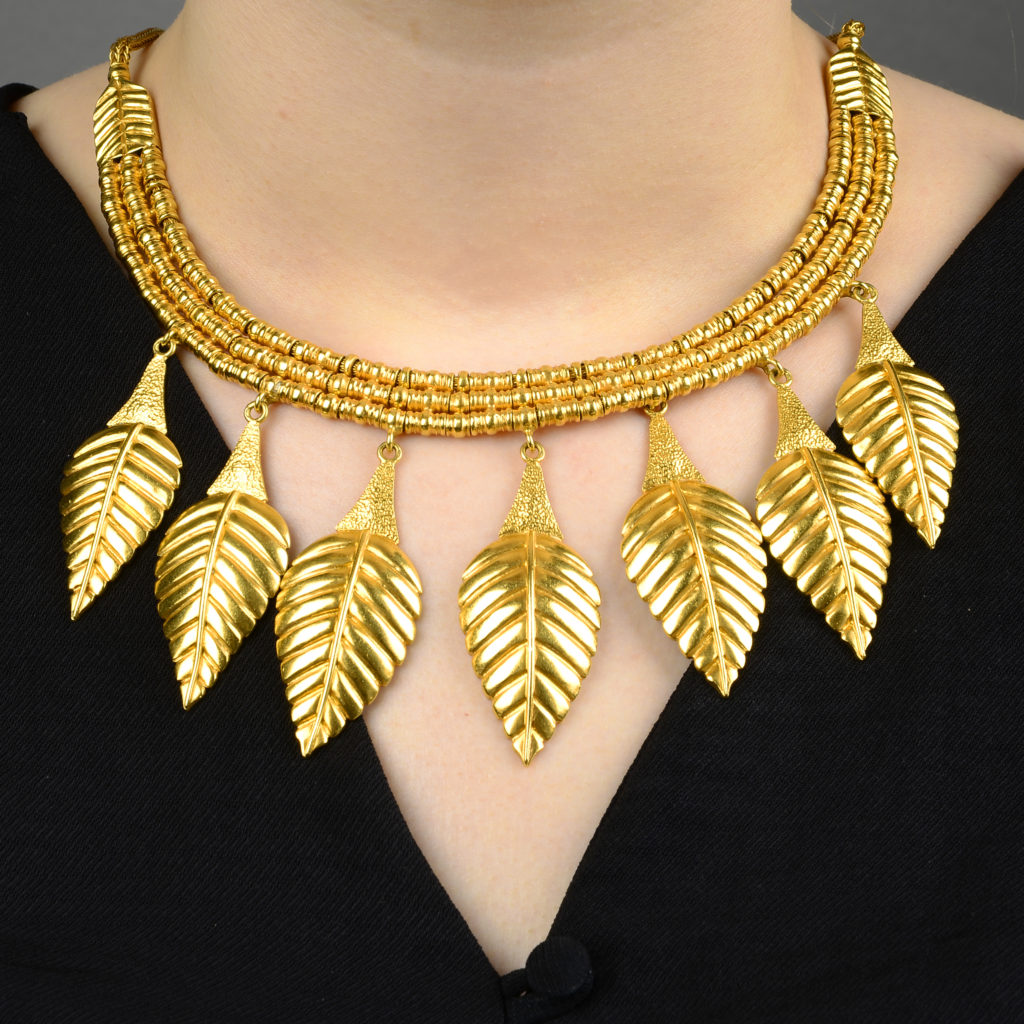
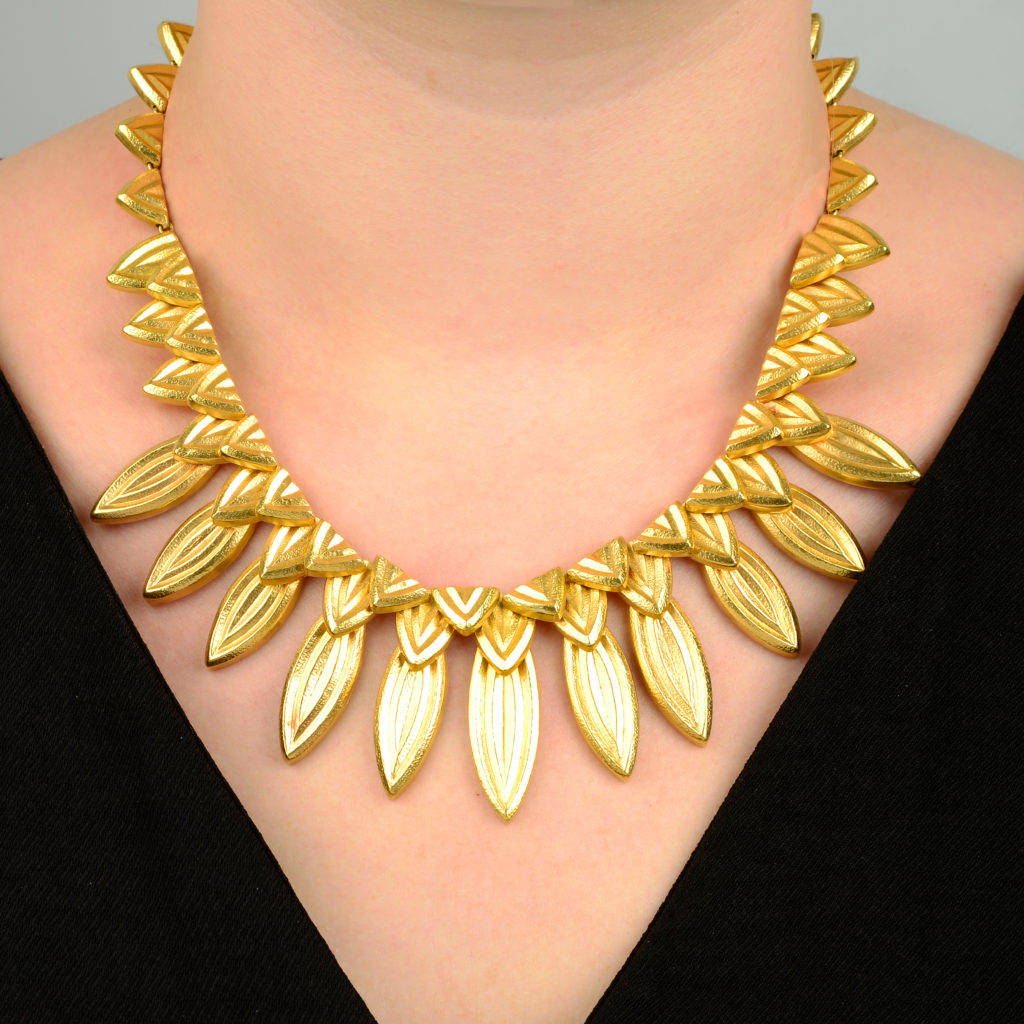
A foliate fringe necklace, by Ilias Lalaounis.
Estimate: £4,500 - £6,500
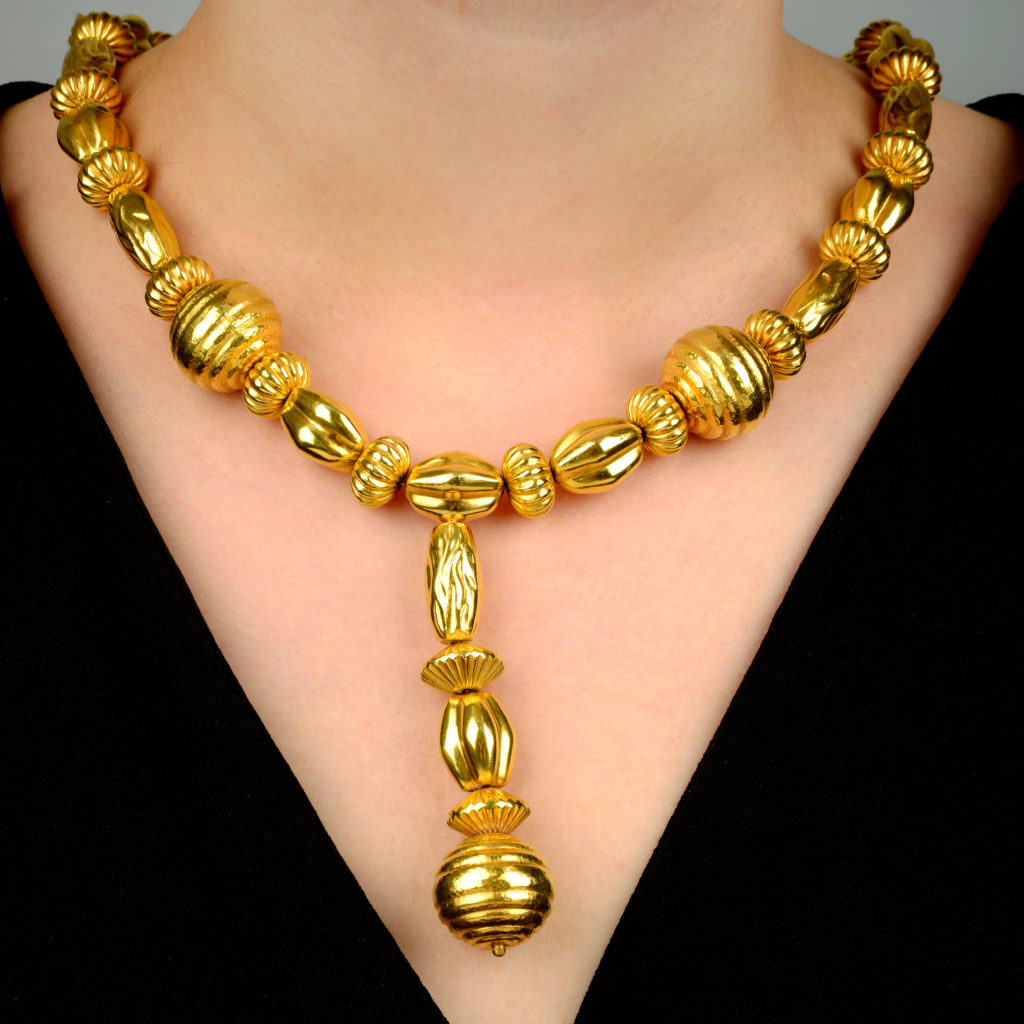
A textured necklace, by Ilias Lalaounis.
Estimate: £5,000 - £7,000
Reproduction Byzantine jewellery was among some of the first collections that Ilias Lalaounis produced. Over the years he not only took inspiration from the jewellery but also the architecture, as is seen in the ring above. Lalaounis was impressed and inspired by the Byzantine’s “daring use of gold and multicoloured stones”, and latterly used Byzantine architecture as inspiration for his pieces. He aimed to “bring the architectural grandeur of Byzantium within reach” with these pieces.
In the late seventies Lalaounis the Empress of Iran invited Lalaounis to create a series inspired by Persian art. This commission led to Lalaounis creating jewellery inspired by ancient Persian jewellery such as the necklace above. This gold fern necklace was inspired by a necklace found in the ancient Persian capital of Susa, the foliate necklace is of similar design and you can see the Persian influences in both.
Lalaounis may not be as much of a household name such as Cartier or Bulgari but there is no doubt that Ilias Lalaounis was a powerhouse of 20th century jewellery design. His deep appreciate of ancient art and insatiable desire to embrace and be inspired by modern technology meant that his creations are both of their time and timeless.












